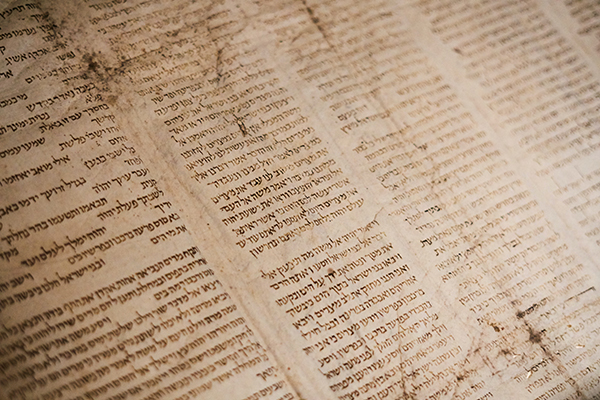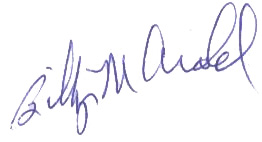Today I bring you Tip #4 in the “How to Read Your Bible” series. Scroll to the end for a full explanation of each previous tip.
Today’s Focus—
Tip #4: Choose your Bible Translation

When you begin to get serious about reading the Bible regularly for yourself, you quickly notice that there are many different English versions of the Bible. This can be very confusing. You may wonder to yourself, “What is the right version? Is there a more correct version? Does the version matter?”
Let’s try to unpack this a little.
The Bible is the Inspired Word of God
The question of translation is a valid question because the Bible is the inspired Word of God. There is a great deal to this almost flippant comment, but simply put, we have come to know that God literally has spoken to us through the written Word, the printed Bible. In the future, we will have a series of articles about this topic; but this is why we treasure the Bible—every word, every story, every meaning. This is why we teach the Bible as our only book on Sundays, as opposed to teaching from other good books and literature out there. We want to hear what God says. This is why you want to learn to be a reader and student of the Bible for the rest of your life, and not just for a season.
Original Language of the Bible
The original languages of the Bible, when they were penned, were Hebrew for the Old Testament (the language of the Jewish tribes of Israel), and Greek in the New Testament (the political Roman language commonly used when Jesus walked the earth—even though Jews spoke Hebrew or Aramaic commonly in their homes). So, in order to really get to the heart of the words and most precise meanings of those words and phrases, you need to examine the Hebrew or Greek languages.
Eventually, as the Bible was passed down through generations, the more common language of the day in the Roman world became Latin, which is a dead and science-oriented language now. During the Middle Ages there was a major push among significant theologians to put the Bible into a readable language for Christ followers, so they could understand it for themselves. Finally, in England, we had the first English-language Bible—the Wycliffe Bible, printed in 1382. This launched a long series of common language Bibles that stretches over time and leads us right up to today. (There’s tons of amazing and valuable history that I just skipped over!)
Our Modern Language Bibles
Most of us will never get into Greek and Hebrew (although we now all have easy access to tools and apps to do so). Instead, we will read the Bible in English—our common language. In our church family, we also have other first-language speakers who will often read the Bible in Spanish, Korean, Japanese, Mandarin Chinese, Russian, or Indian Telugu. God’s Word is God’s Word in any language out there. But even when we find a Bible to begin reading English or one of the other languages, we discover quickly that there are multiple translations or paraphrases. Is there a correct one—or a better one?
Current Bible in the Languages we can all read
Rightfully, we have wanted to put the Bible, God’s written Word, in front of as many eyes in as many languages as possible. I understand the Bible is written—either all of it or at least the New Testament or Bible story sets—in over 3400 languages around the world. We want everyone——and this includes you—to have access to the message of God’s Word in an understandable, readable, and applicable way.
English Translations
A translation uses an early manuscript of Hebrew and Greek and then translates that manuscript into the common language of understanding. Some translations are more strict using different metrics to accomplish this, and some are a bit more loose, which means they use a word or words to get the point across. Remember that languages are a bit tricky. There is not always an exact word in one language that is completely transferable to another language. That’s why some of the differences exist between translations. Honestly, there are good translations, and there are some bad translations. There are old language translations, and then there are newer translations. This is important because languages evolve over time.
English Paraphrases
A paraphrase of Scripture uses word pictures to describe a situation or scene. Paraphrased translations are much more liberal in their use of language to help get the point across, without being tied to a word-for-word crossover. When truly doing a deep study of the words of Scripture, a paraphrase is not what you want to use. However, I personally enjoy pulling out paraphrase translations, and I find great benefit in them as I see how certain stories, passages and truths are worded in the paraphrasing.
My journey and my recommendation
I like both strict translations and paraphrases, for specific reasons. I would tell you to find a good, solid TRANSLATION and use it as your main reading Bible, but keep a good paraphrase on hand to read as you explore a little deeper.
As a young boy, we only had King James Version (KJV) Bibles. Translated in 1611, this was pretty much the only real Bible translation in English until the 1960s. The KJV is wonderful, but its drawback is that it uses old English language and phrases that we don’t often use or understand anymore.
When I was a young man, the first two Bibles that I began to read more deeply were actually paraphrases. My parents gave me a Living Bible paraphrase that I used as a devotional Bible. Then, as a young teenager, I went to a Fellowship of Christian Athletes (FCA) camp led by our high school football coach, and they gave out a paraphrase of the New Testament called “Good News for Modern Man.” I absolutely devoured it. It was highly instrumental in my formative developing Bible reading habit.
When I was a young youth minister, my pastor at the time, Larry Nixon, gave me a New American Standard (NASB) translation of the Bible which became my go-to Bible for all things. I loved it. When I began working with Don Turner, he challenged me to get a New Living Translation (NLT) Bible, which I have devoured and written notes all over. I currently use the New International Version (NIV) and the Christian Standard Bible (CSB) extensively, and sometimes the English Standard Version (ESV). All of them are wonderful. Some people prefer one over the other. I use them all.
My personal current list of go-to Bibles:
- Translations: NIV, NASB, CSB, NLT, ESB
- Paraphrases that I still enjoy currently and use from time to time: The Message, Amplified Bible, Living Bible, Good News for Modern Man
Which one for you? Don’t get overly worried. I would say use a translation as your main Bible. But either way: pick one, read it, mark it up—then when you are finished, pick another one. Don’t use the many versions out there as a hang-up to NOT get started! The Bible is the most printed and widely accessible book in the world. Just start your journey—and never stop reading God’s Word.
Next Week — Tip #5: Take Notes and Journal
MY PERSONAL DEVOTIONAL
A peek into Billy’s devotional thoughts this week
Each week I am giving you a little insight into my devotional life and reading, only to show you by example what you can and should do with your personal reading of God’s Word.
My current daily reading locations:
- Old Testament — 2 Samuel
- Gospels — Mark
- New Testament — 1 Corinthians
- Proverbs
A devotional from my reading this week:
Wisdom: Proverbs 3
- “Wisdom is more profitable than silver” (3:14)
- “Wisdom is more precious than rubies…” (3:15)
- “Wisdom is a tree of life to those who embrace her; happy are those who hold her tightly.” (3:18)
There is nothing like Proverbs 3 as it speaks to the most valuable possession I could have: WISDOM. I spend some of time, like most of us do, trying to sort out the best possible decisions for each day and week. I would like to be the kind of brilliant person to solve issues in front of me: make the right financial investments that bring the best profits, pick the right stock at the right time so it would increase, or plant a business in the right location for the highest yield. But as good as any of those might be for a time, the most valuable asset I could ever have—the most valuable asset I could ever attain in my life—is wisdom that comes from God.
My prayer:
Dear God, may I be one that daily wakes up and seeks the Wisdom that comes from you in any and all circumstances. May I live out the truth of Proverbs 3:5-6 — “Trust in the Lord with all your heart; lean not on your own understanding. In all your ways acknowledge Him, and He will direct your path.”

TIP #1: READ SYSTEMATICALLY AND SLOWLY
How to Read Your Bible (Part 1)
Don’t worry about reading for speed. Learn to set a reading habit for the rest of your life.
TIP #2: CHOOSE THE LOCATION OF WHERE TO READ
How to Read Your Bible (Part 2)
Read the Bible in four locations:
- Old Testament
- Gospels
- New Testament
- Psalm
TIP #3: USE A STUDY BIBLE AS YOUR PRIMARY BIBLE TO READ FROM EACH DAY
How to Read Your Bible (Part 3)
Choose one of the many study Bibles, and make that study Bible your primary PAPER Bible to read each day until you have read the Bible through—then choose another one and start the process over.